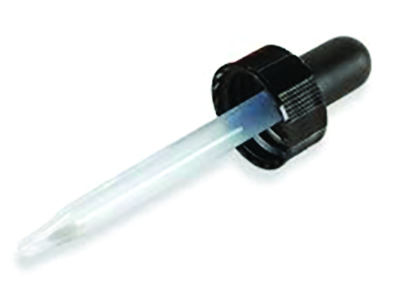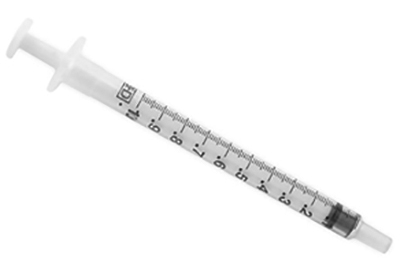Over the last few weeks, we have answered questions pertaining to the care of the newborn puppies (neonates, 1 – 3 weeks of age) and during the period 3 weeks to about 6 months of age. Specific advice was also given on hand-rearing of pups rejected by the mother dog (see Pet Care article of July 26, 2020). We also provided the composition of a milk replacement formula that can be prepared at home if the puppies have been orphaned/abandoned or the mother is not producing adequate quantities of milk to support her litter.

It seems that this Pet Care column is growing in popularity (or the specific theme of “Pet Pediatrics” is of special interest to breeders and caregivers alike). One particular fan mentioned that it was all well and good to describe the formula for the rejected puppies, but the caregiver needs to know how to administer the liquid meal to newborn puppies. Well, in my own defense, I thought that this was common sense. But I was wrong and the pet owner was right. I took it for granted that the knowledge my colleagues and I had acquired over the years of training and practice was known to laymen. One should never assume that technical expertise is known and available to pet owners. This assumption is reflective of laziness or just plain oversight by the professional who should know better. I am sorry, Mea culpa.

So let us, today, correct this particular omission/deficiency relative to the hand-rearing of newborn and young puppies.
HOW TO ADMINISTER THE HOME-MADE FORMULA
I would suggest that the caregiver does not use a teaspoon, or any spoon for that matter. Eyedroppers, syringes or even baby dolls’ nursing bottles are much easier to fill with the formula and to administer orally.
Eyedroppers are available at pharmacies. You may even already have one in your home. There are two types of eyedroppers – glass and plastic. The plastic ones are preferred for obvious reasons. Squeeze the rubber-bulb and place the nozzle into the formula then release the pressure and allow the liquid to rise into the tube. You can now introduce droplets of formula into the pup’ mouth – slowly and not in squirts.
Syringes are also easy to purchase. A 1ml syringe (tuberculin syringe) can be used. Cut off the conus (nozzle) of the syringe and make the hole slightly larger.
I mentioned baby dolls’ nursing bottles simply because I have seen them used successfully to feed both kittens and puppies. Again, after enlarging the aperture of the nipple, fill with the formula and feed the pups/kittens slowly. Actually, at least theoretically, this “baby/dolly nurser” is a good option, because it stimulates the suckling reflex in the puppy. Feed in small amounts at intervals, as the pup/kitten will get tired more quickly from suckling and would need to rest.
N.B
(i) If you are going to use the nursing bottle, do not hold the pup as you would hold a baby being nursed. Place the pup on its stomach – insert the nipple into its mouth at a 45° angle (half of a 90° angle); this method reduces the possibility of air getting into the stomach and negates the need for the caregiver to “burp” the pup.
(ii) I understand that there are puppy nursers that can be bought at pet shops.
And now we come to the tube insertion method of feeding with a soft rubber of plastic tube. Your vet must give you guidance on this procedure, which is usually necessary when the pup is unable to suckle through the methods described above or may be too weak to suckle, and, thus, has to be force-fed.
I favour this option simply because, after your vet has shown you how to insert a feeding tube through the mouth of the puppy directly into its stomach, you will gain in dexterity and proficiency, and you will be able to complete the feeding exercise within minutes. You can easily calculate/monitor the exact amount of food being given to each pup. Since you are infusing only liquids into the stomach and because the puppy is not swallowing air with each suckle reflex, there is no need to burp the newborn pup.
Using this feeding method (tube insertion),
will raise questions, of course:
Q: Where do I get the appropriately sized tube?
A: From any drug store/pharmacy.
Q: What is the length of tube (soft rubber catheter) to be bought?
A: According to the size of the puppy; small breeds → short length; large breed → longer length. Your vet will advise you.
Q: How much of the tube must I insert?
A: The pup’s stomach is located at about the level of the last ribs. Measure the length of the tube from the entrance of the mouth to where the last rib can be felt from the outside. (See picture below). You could mark the tube on the mouth end, so that you know how far to insert the tube, at every feeding.
Q: Could the caregiver inadvertently insert the tube (soft rubber/plastic catheter) into the windpipe (trachea)?
A: Highly unlikely, because (i) the vet would have shown the caregiver exactly how to insert the tube; (ii) the tube itself would be too large to get into the windpipe’s passage. Actually, as one slowly and gently pushes the tube towards the oesophagus (the tubular link between the back of the throat and the stomach), the pup itself will begin to swallow the tube; (iii) If the tube starts going down the wrong way, the pup will immediately react by choking/gagging and coughing. You must, of course, withdraw the tube immediately.

(Photo courtesy of Ms. Donna Lam).











